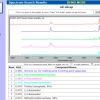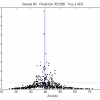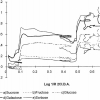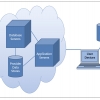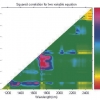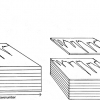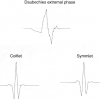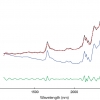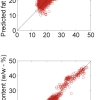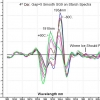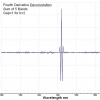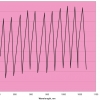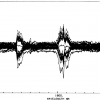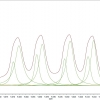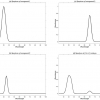Articles
Who's ahead in the Cloud?: Part three
Following on from the two recent articles on how the Cloud may be impacting the availability of scientific software delivery for spectroscopists, this article looks at what the wider commercial spectroscopy software providers have been doing in this area.
The last furlong (6). The finishing line is in sight!
This is Tony’s last column for Spectroscopy Europe. It is explores an idea that he has been developing for over 30 years, although as Tony points out the story starts around 3500 years ago.
The last furlong (5). Classification and identity testing
Tony (A.M.C.) Davies continues on his last furlong, this time considering “Classification and identity testing”. As well as some interesting insights into the analytical lab in the late 1960s, he gives his opinion on various chemometric techniques and on identity testing, as well as thoughts on future development.
A head in the Clouds? Part One
In the Tony Davies Column, Tony (A.N.) Davies and Mohan Cashyap introduce us to the potential for Cloud Computing in the lab. This is the first of a two-part contribution, and, for the second part, they need your help with your experiences of Cloud Computing in your lab or organisation.
The last furlong (4). Multi-variable regression
Tony (A.M.C.) Davies looks at Multiple Linear Regression (MLR) this issue, as well as expressing his opinions about Principal Components Regression (PCR) and Partial Least-Squares (PLS).
The last furlong (3). Principal component analysis
Tony (A.M.C.) continues down the last furlong of his series of Tony Davies Column articles. This issue, he considers principal component analysis (PCA). Using research recently published in the Journal of Near Infrared Spectroscopy, he explains that PCA is a very useful tool but it will not solve all our problems. Two old articles on PCA, including Tony’s concept of the “Data Cake” have been added to the website, are referenced in Tony’s article and can be freely downloaded by readers.
The ACS 2013 symposium on exchangeable data formats
Robert Lancashire reports from the Chemical Information Division (CINF) of the American Chemical Society meeting at their recent 246th ACS National Meeting and Exposition.
The last furlong (2). Data Compression by wavelets
Now that Tony understands wavelets, he is in the perfect position to explain them to the rest of us! Whilst wavelet compression is an interesting and popular method, it is worth confirming that there is a real benefit in using them compared to FT compression, especially for near infrared spectra where there are few regions of flat baseline.
The last furlong (1). Data compression
Tony (A.M.C.) Davies starts a review of the chemometric ideas that have most excited him over the last 30 years. In this column, he looks at the use of Fourier transformation for data compression. FT can also provide the side benefit of reducing high-frequency noise.
Qualitative and quantitative assessment of acetylated wood using infrared spectroscopic methods and multivariate data analysis
Chemical modification of wood by methods such as acetylation is required to improve characteristics such as photosensitivity and combustibility, and to provide harmonisation of wood properties in order to avoid swelling and shrinking and to improve biodegradability. The authors describe the use of mid and near infrared spectroscopies to monitor chemical changes due to acetylation is described.
Variable selection for regression analysis: an up-date on an old problem
Tony (A.M.C.) Davies and Tom Fearn describe an enhancement of the popular partial least squares (PLS) technique, powered partial least squares (PPLS), that has shown significantly better results.
Bob McDonald
Tony (A.N.) Davies and Robert Lancashire remember Bob McDonald who co-authored the first JCAMP-DX standard for infrared spectroscopy.
What IS and what is NOT chemometrics
Tony Davies makes sure we understand “What IS and what is NOT chemometrics” and why it matters.
Examining diffuse reflection and transmission spectra more thoroughly: Part 2. Sample temperature and sample composition
The Tony Davies Column once again contains a contribution from Karl Norris, who is widely regarded as the “father of NIR spectroscopy”. Karl continues to produce innovative ideas about the field and this article is no different. Building on the previous article concerning fourth derivatives, Karl has investigated the effect of varying gap sizes with some remarkable results.
Examining diffuse reflection and transmission spectra more thoroughly: Part 1. Instrument noise
This Tony Davies Column is contributed by Karl Norris, known to many as “The father of near infrared spectroscopy”. He introduces his calculation method for fourth derivatives and shows how it can be used to extract instrument noise.
Always look at the spectrum: Part 2. 3-D Normalisation
Tony (A.M.C.) Davies is again telling us to “Always look at the spectrum”. This time he uses an example from the development of a NIR spectrometer to demonstrate that one doesn’t really know what’s going on until one has “looked at the spectrum”.
Always look at the spectrum: Part 1. NIR noise spectra
Tony (A.M.C.) Davies stresses the importance of always looking at the spectrum, even if you [think you] know there’s nothing to learn. He relates his experience with noise in NIR spectra and what he has learnt from it. He would like us all to examine spectra for abnormality before relying on automated methods.
A new approach to improving automated analysis of proton NMR spectra through Global Spectral Deconvolution (GSD)
1H NMR spectra are usually interpreted by hand, which is very time consuming, and can become a process bottleneck in fields such as high-throughput NMR. Greater automation of the spectral analysis process has become essential if NMR is to be of value as a high-throughput analytical method in the future.
A digression on regression
Tony Davies and Tom Fearn present “A digression on regression”. They turn their attention to one of the simpler regression techniques, Classical Least Squares (CLS). As well as an explanation of the basics, they explain why it is not often used in spectroscopy, and give the pros and cons of various regression techniques.
Spectroscopy resources
Time for a good whinge (“complain persistently and in a peevish or irritating way”—Oxford Dictionaries Online) and to get a little controversial. Having had a year to look at the resources available to us to help educate our budding spectroscopists, I have been disappointed that much of the educational resources available online appear incomplete or outdated. For a generation of students brought up in schools with interactive whiteboards, good quality spectroscopic teaching materials of this nature are almost non-existent.

